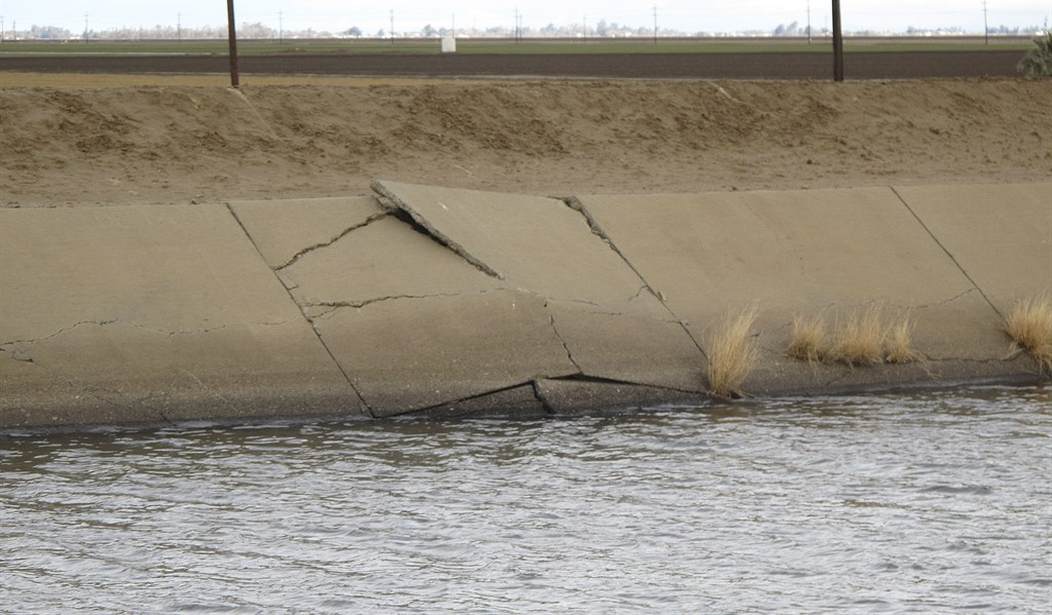California is facing a years-long water crisis precipitated by intense bouts of drought. Mandatory water rationing, water fixture replacement, and irrigation restrictions are some of the emergency measures that Californians have had to bear. The solutions are drowning in red tape. Activists from across the political spectrum - from environmentalists to anti-density advocates to animal rights groups to federal bureaucrats - have pursued and supported policies that are making it worse, at the expense of Californian farmers, residents, and businesses.
The water crisis is driven by a years-long lack of rainfall, but there are solutions that governments are unfortunately ignoring and examples abound of technological and engineering projects that could have helped. A recently-opened desalination plant faced 15 years of bureaucratic holdups and environmentalist lawsuits, while another desalinization plant is in limbo due to environmental concerns of the California Coastal Commission. The Obama Administration's Department of the Interior has advocated destroying four dams on the Klamath River that have helped water conservation efforts in order to save the salmon population. Gov. Jerry Brown has drained precious reservoir water - enough for hundreds of thousands of California residents - for the purpose of fish preservation.
The California Environmental Quality Act (CEQA) has proven to be anti-growth over the long haul, facilitating and enabling lawsuits that slow development and add enormous costs to new technological projects. CEQA requires all projects to assess long-term environmental impacts to things like air quality and carbon emissions and affected wildlife, among many others. Both Californian bureaucratic agencies and independent environmentalists are able to put water development projects on hold by using provisions of CEQA to tie them up with litigation.
Despite no mention of the problems with CEQA from Gov. Brown, efforts have been made in the California legislature to make incremental reforms to CEQA that would help government get out of the way of technological and environmental solutions to the Californian water crisis. Some of these solutions are piecemeal and insufficient, but step one is recognizing that a problem exists.
Recommended
Presidential candidate and longtime California resident Carly Fiorina has attacked the environmental opposition to these projects, calling the drought “a man-made crisis” and saying “liberal environmentalists have prevented the building of a single new reservoir or a single new water conveyance system over decades during a period in which California’s population has doubled.”
It’s not merely a California issue, either. The federal Endangered Species Act gives federal authorities purview over much of the waterways where a fish called the Delta Smelt lives. They’ve flushed trillions of gallons of water that could have sustained the lives of millions of Californians, and they’re planning on spending billions of dollars to come up with a tunnel system to protect the fish.
Republicans in Congress have proposed legislation that would alter the Endangered Species Act to give California more leeway around how they treat the waters where the smelt lives, but Democrats have consistently refused to consider the legislation and President Obama has promised to veto it.
These are all political and regulatory hurdles to solving the California drought crisis. From water storage to desalinization to natural dam projects, there are ways to solve the crisis – and some of these projects have been left in limbo since long before the drought. The technological solutions are there, but artificial scarcity created by environmental regulations at both the state and federal level have become counterproductive. A massive drought like the one California is currently experiencing is a challenge, to be sure. But what it has done is highlight how the environmental and regulatory framework currently in place do more to strangle solutions rather than enable them when crisis does strike.

























Join the conversation as a VIP Member